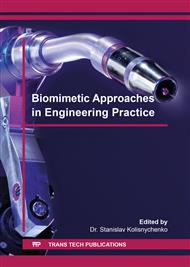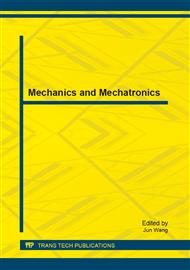p.3
p.10
p.17
p.23
p.30
p.38
p.43
p.51
Research on the Wing Kinematics and Bionic Model of Cicada
Abstract:
Insect-like flapping-wing aircraft is a research focus in the study of Micro Aerial Vehicle. In the paper, a cicada is chosen as the object, and based on the analysis of its wing, its kinematics and three-dimensional model are researched. In the study of kinematics, two softwares (Movias-pro and Photoshop) are applied, and the laws of flap and torsion movements are obtained. In the study of three-dimensional mode, the wing is scanned by the use of flat plane scanning method, and the resulting picture is vectorized. Based on the wing datum, the three-dimensional model of wing is created by the use of Pro/E. The result from the paper lays foundation for the development of cicada-like flapping-wing aircraft.
Info:
Periodical:
Pages:
17-22
Citation:
Online since:
October 2013
Authors:
Price:
Сopyright:
© 2013 Trans Tech Publications Ltd. All Rights Reserved
Share:
Citation:



